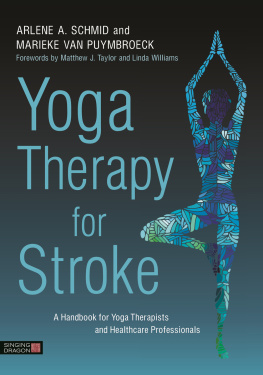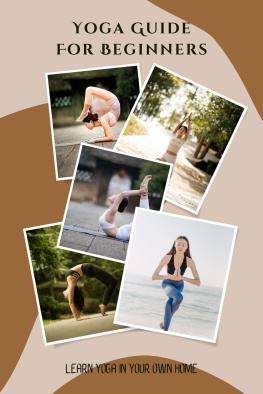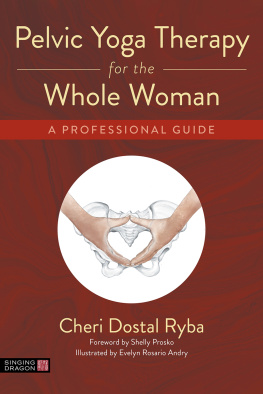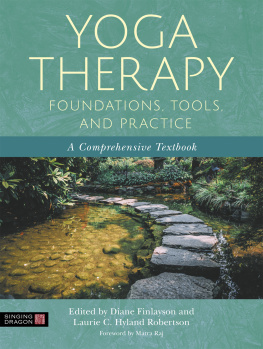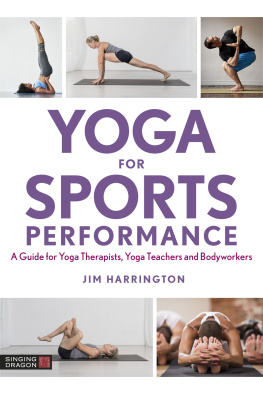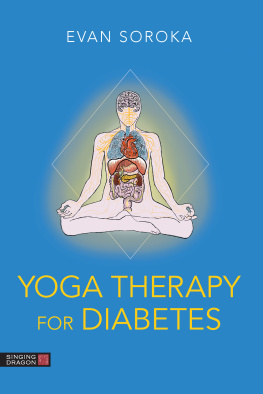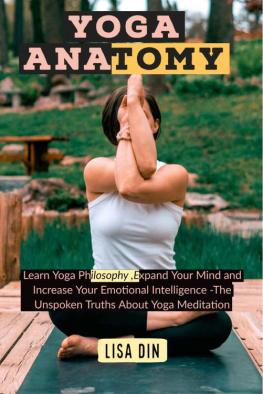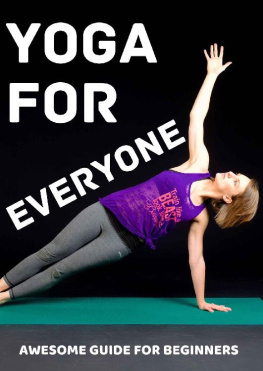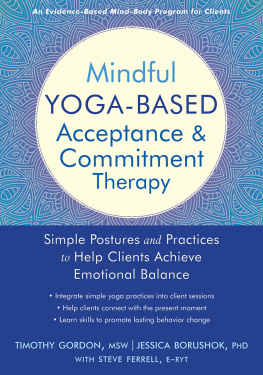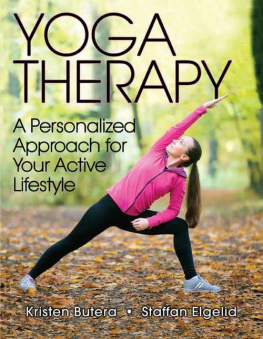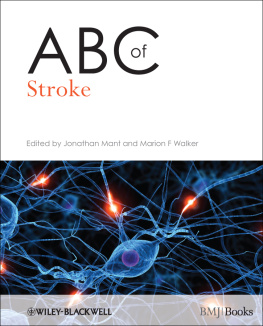
Yoga Therapy
for Stroke
A Handbook for Yoga Therapists
and Healthcare Professionals
ARLENE A. SCHMID and
MARIEKE VAN PUYMBROECK
Forewords by Matthew J. Taylor and Linda S. Williams

Contents
Foreword
Stroke. Both a noun and a verb. The old English is a gentle caress. The clinical diagnosis? A swift, silent swipe through a human life that affects every part of that life and the entire community fabric of which they are an interconnected thread. Yoga Therapy for Stroke masterfully unfolds this paradoxical word for the reader to discover not only the lived experience of the person with the diagnosis, but also the opportunities and challenges for those of us that are related or hope to serve in their processing of healing.
It is no surprise to me that Doctors Schmid and Van Puymbroeck have proven themselves up to this task. Arlene and Marieke have been yoga/rehabilitation colleagues and friends of mine for years in an initially small, but growing cadre of like-minded professionals. While their academic pedigree carries the title Doctor, one only need spend a few minutes with them and you sense their enormous hearts and spirits that make such formality feel stiff and awkward. Their book sheds that same quality of warmth and compassion as they balance their academic and clinical brilliance with a writing style that is accessible for their varied audience of yoga professionals, rehabilitation professionals, and front-line support providers.
The power of a stroke demands this inclusive spirit of theirs. That swift, silent swipe through the neurological architecture of the individual is a transformative wound. The event is what the late Irish poet John ODonohue described as a threshold in life. Suddenly, everything changes as the person steps across the threshold from the room of before stroke into the new room of after stroke. Quite literally their wound changes their brains form (trans-forms). So too does every relationship they have: self, family, occupation, social roles, avocations, spiritual, and on and on. Each of the relationships is forever altered and without care can be separated if not reconnected or yoked back together. What better reason do we need to dive in and explore how yoga (the science of yoking/connecting) can serve to transform a wound of the marvelous brain from broken to what ODonohue describes as a sacred wound?
Please dont be alarmed those of you of a more conservative or conventional perspective. Sacred doesnt mean something religious, and what this book teaches is neither woo-woo nor a threat to anyones spiritual practice. Rather, sacred means to make holy/whole, the opposite of profane or common. In our conventional rehabilitation world, injury and illness is approached as something to get over, past, or beyond.
A stroke doesnt afford us that privilege. Even if a full recovery of function is achieved, nothing in that persons life is ever the same again. Thats what transformative means. Yoga differs in approach to injury and illness. It does not treat or cure. Yoga does not seek to get over, past, or beyond. A practice that invites and explores both reflection and action based on that attention restores the new relationships affected, making the wound whole or sacred. To not attend to every aspect is both profane and incomplete.
As you will read, yoga is such a practice of attention and invites a pause to right now, this moment, this breath, for all of us to ask, What is? Not what was, and not what will be, just, What is? It is that simple, and that hard.
The authors have also successfully avoided teaching just parts of yoga in isolation, which would produce additional fragmentation of care. You are about to discover the full spectrum of what makes up yoga, not just some new exercises to add to therapy. It doesnt matter whether you are the person who had the stroke, the one providing support, or the one teaching the practices, the good news is you cant help but care for yourself as well when you employ Yoga Therapy for Stroke . As you read, then practice and experience, you will be slowing, sensing and waking up to What is? right now, creating space for your own health, but also priming for the creativity that stroke demands from each of us.
Arlene and Marieke have set us up to claim the healing creativity that exists in each of us. They are collectively redefining their professions as well by this work. Arlene, as an occupy-ational therapist, has stepped forward in her already comprehensive tradition to prod her colleagues to offer even deeper exploration of how their patients and themselves as therapists occupy this moment by advocating the inclusion of yoga therapeutically in personal and professional practice. Marieke invites her peers as re-creational therapists to step forward and assume their full agency to create environments where their patients re-create their lives in this new, post-stroke room of life. And both arent just being wishful but continue to walk the talk through the rigorous asana of research, making their vision real in a way that will transform the conventional healthcare body of literature.
For the yoga professionals reading, you have a special treat ahead. The design of this book ensures a very practical understanding of how your yoga can safely weave into supporting students and their caregivers. The yoga practice of ahimsa (non-violence) is reinforced through the book so that you and your clientele can be safe. No matter if you are sitting with your first student post-stroke, or have taught for years as an early pioneer, there is much to discover in the pages ahead.
In closing, may I encourage each of us to model what the authors do every day: reach out to your local community to learn from one another, forge respectful interprofessional communication, and remember the people that have had a stroke are both the experts and our teachers.
Together, may we all work towards Patanjalis Yoga Sutra 2.16:
Heyam duhkham anagatam: Prevent the suffering that is yet to come.
Yoga Therapy for Stroke brings us that much closer.
Matthew J. Taylor, PT, PhD, C-IAYT
Founder and Director of SmartSafeYoga
Foreword
Stroke is common, familiar to healthcare practitioners and lay persons alike, and yet also strikingly individual, as it affects each person in a unique way. Because each person is a unique amalgamation of their physical, mental, emotional, social, and spiritual selves, and because each stroke is unique in location and size, the effects of stroke on the whole person are complex and changing over time.
At its core, stroke represents a sudden fracturing of the mind-body connection, often causing unexpected physical difficulties as what was physically subconscious becomes consciously effortful. Equally if not more difficult is the frequent effect on self-image, as stroke survivors experience a loss of knowing the self and knowing ones place in the world. Decades of brain research have clearly shown that physical and cognitive therapies are effective in harnessing the brains natural systems of plasticity after stroke, promoting network repair and formation and improving stroke survivors function and well-being. Yoga, as a practice that harnesses both mind and body, is ideally positioned to mend this fracture.
Drs. Schmid and Van Puymbroeck have, in Yoga Therapy for Stroke , generously shared their wealth of experience as therapists, clinical researchers, and yoga practitioners and teachers so that the seemingly daunting possibility of bringing yoga to the stroke survivor is made possible. They give proven, practical advice and example practices for therapists who want to integrate yoga into their therapeutic practice, for yogis who want to integrate differently abled stroke survivors into their yoga classes, and for stroke survivors themselves who are looking for ways to guide themselves into greater recovery. This book is critically important for all of these audiences, as therapists and yogis need additional tools to offer, and stroke survivors need access to evidence-based therapeutic interventions beyond those typically offered in a medical setting.
Next page
